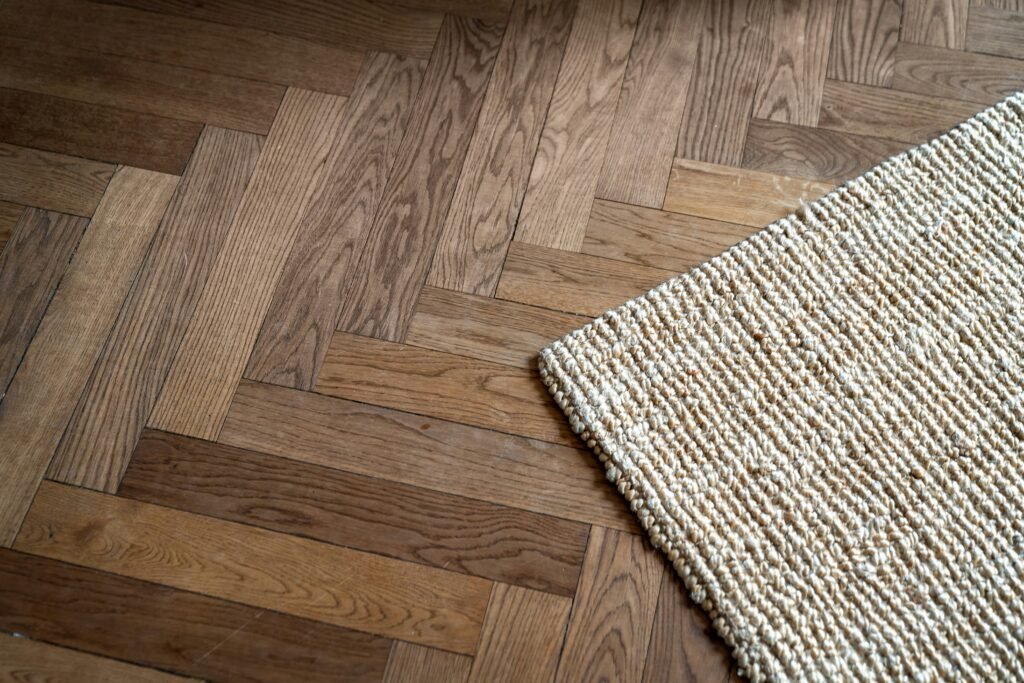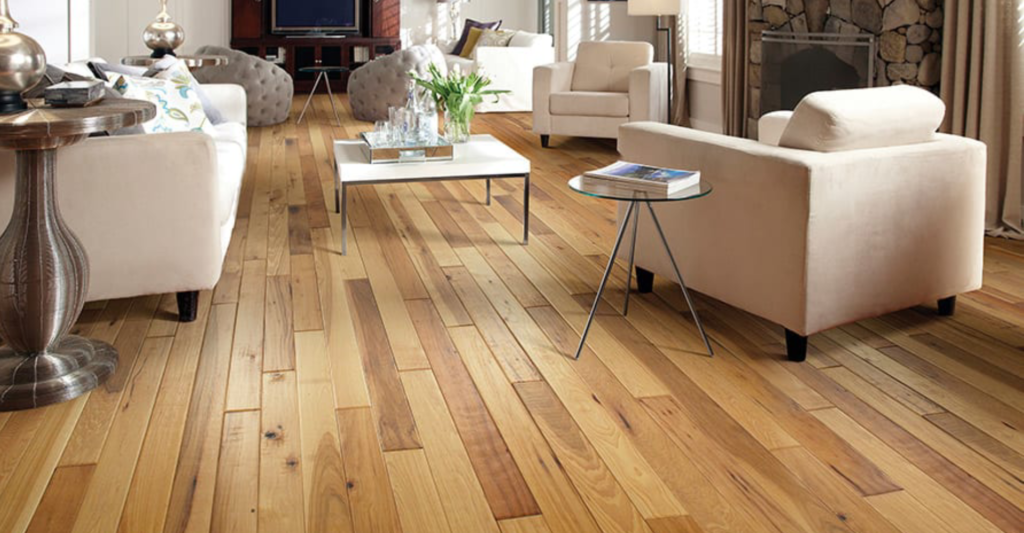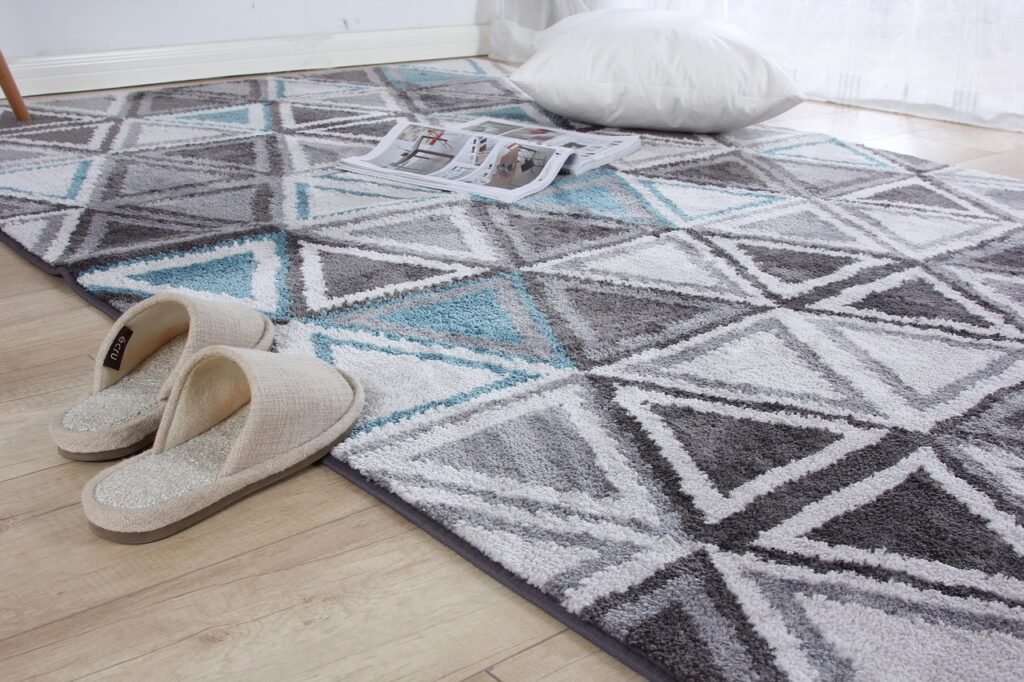How Carpet Rebinding Restores Beauty to Area Rugs and Remnants

Area rugs and carpet remnants can add warmth, style, and personality to any space. However, with time and constant use, their edges may begin to fray, unravel, or curl, leaving your cherished rugs looking worn and in need of attention. Luckily, Carpet Rebinding offers a cost-effective solution to restore the beauty and functionality of your area rugs. If your favorite rug is showing signs of wear along the edges, rebinding your carpet’s edges can be a smart and cost-effective solution. At The Carpetman, we specialize in breathing new life into worn rugs through expert flooring services you can trust. What Is Carpet Rebinding? At its core, Carpet Rebinding is the process of repairing and refreshing the edges of rugs and remnants. This involves removing old, damaged bindings and sewing on new, durable ones to create a clean and polished finish. Rebinding doesn’t just make your rug look new again; it prolongs its life and reduces further damage. Types of Binding Available for Rugs This process works for both machine-made rugs and handmade rugs, making it a highly versatile service. You can even customize the binding to match your home decor or the original design elements of your rug. Common Signs Your Rug Needs Rebinding Not sure if your rug or remnant is ready for rebinding? Here are telltale signs to watch out for: If you’ve noticed one or more of these issues, addressing them sooner rather than later can prevent further deterioration and costly repairs. Benefits of Carpet Rebinding Rebinding may seem like a small fix, but its benefits are anything but minor. Here’s why it’s such a valuable service for rug owners: Why spend a fortune on a brand-new rug when you can restore your existing one for a fraction of the price? Carpet Rebinding is significantly more affordable. Rebinding brings back the clean, refined edges of your rug, making it look just as stunning as the day you bought it. Choose the color, material, and width of your binding to create a rug that perfectly matches your decor. By choosing to restore instead of replace, you minimize waste and contribute to a more sustainable approach to decor. Carpet Rebinding helps reduce landfill contributions while extending your rug’s lifespan. Related keywords to know for this process include “area rug edge repair,” “rug restoration,” and “carpet repair services”—all essential terms in your search for the ideal local service provider. Carpet Rebinding vs Replacement You might wonder, “Should I repair my rug or replace it altogether?” The answer depends on several factors. Replacing a rug can often cost hundreds or even thousands of dollars depending on its size and quality. Carpet Rebinding, on the other hand, is much more budget-friendly. Rebinding requires minimal time compared to sourcing, ordering, and waiting for a replacement rug to arrive. Full replacement might make sense if your rug is severely worn, beyond repair, or you’re looking to completely change your rug style. If your rug holds sentimental or monetary value, rebinding is the better option. Whether it’s a family heirloom or a handmade treasure, repair and preservation are practical and thoughtful choices. The Rebinding Process at The Carpetman At The Carpetman in Santa Fe, we take immense pride in offering Carpet Rebinding services that prioritize craftsmanship and customer satisfaction. Here’s how our process works: We’ve built a reputation for attention to detail, and our team is committed to restoring your rug while preserving its original charm. How to Maintain Rebound Rugs Once your rug looks brand new again, keeping it in pristine condition is essential. Follow these maintenance tips to extend its life and maintain its fresh appearance: Vacuum regularly to prevent debris and dirt from accumulating on the edges. Use rug pads to prevent shifting and reduce friction on the edges. Blot spills immediately and clean up stains following the care instructions for your specific rug type. Check the binding for wear over time and address any minor issues early to avoid major repairs down the line. Restore Your Rugs With Carpet Rebinding Carpet Rebinding is a time-tested technique that can transform frayed, worn rugs into beautiful, functional pieces. Whether you’re preserving a family heirloom or giving a new lease on life to a modern rug, rebinding offers a sustainable, cost-effective option. If your rugs deserve some TLC, contact The Carpetman in Santa Fe today. Our expert team is here to help you maintain the beauty and value of your area rugs. Get in touch for a free estimate or stop by to see our craftsmanship firsthand. Don’t replace it. Rebind it. For general knowledge and in-depth information on a wide range of topics, visit the reliable resource at Wikipedia.
What is a Subfloor? A Complete Guide to Flooring and Subfloor Basics

When it comes to building or renovating floors, the term subfloor often comes up, but many people don’t fully understand what it is or why it’s important. Whether you’re a DIY enthusiast, a homeowner planning a remodel, or just curious about home construction, understanding the basics of flooring and subflooring can save you time, money, and frustration. In this guide, we’ll cover everything you need to know about subfloors — what they are, why they matter, types of subfloors, and how they fit into your overall flooring system. What is a Subfloor? A subfloor is the structural layer of flooring that is installed directly over the floor joists of a building. It acts as the base layer on which your finished floor covering—like hardwood, tile, carpet, or laminate—is installed. Think of the subfloor as the foundation for your floor inside your home. Just like a building’s foundation supports the entire structure, the subfloor supports the flooring materials and helps distribute weight evenly across the floor joists. Why is the Subfloor Important? The subfloor is essential for several reasons: Without a good subfloor, the finished floor can become uneven, squeaky, or even damaged over time. Components of a Flooring System Before diving deeper into subfloors, it helps to understand the layers that make up a typical flooring system: Types of Subfloor Materials Subfloors can be made from various materials depending on the type of construction and budget. The most common types include: 1. Plywood Subfloor 2. Oriented Strand Board (OSB) 3. Plank Subfloor 4. Concrete Subfloor Subfloor Installation Basics Proper installation of a subfloor is crucial for a lasting and sturdy floor. Here are some important points about installation: Signs You Might Need to Replace or Repair Your Subfloor Sometimes the subfloor needs maintenance or replacement. Look out for these warning signs: If you see these signs, it’s best to have a professional inspect the subfloor to determine the best course of action. Tips for Choosing the Right Subfloor for Your Project Final Thoughts The subfloor may be “hidden” beneath your finished flooring, but it’s a critical part of your home’s structural integrity and overall comfort. Whether building a new floor or renovating an existing one, understanding subfloors will help you make informed decisions that ensure your floors are safe, durable, and long-lasting. Next time you look down at your floor, remember — the strong, steady surface you enjoy is thanks to the humble subfloor beneath your feet!
The Ultimate Guide to Carpet and Flooring: Types, Benefits, and How to Choose

Flooring is one of the most important elements in any space. It affects the look, feel, and comfort of a room and can impact maintenance and durability. With so many options available — from carpets to hardwood, laminate, vinyl, tile, and more — choosing the right flooring can be overwhelming. This guide will help you understand the basics of carpet and flooring types, their benefits, and tips to pick the best fit for your space. 1. Understanding Carpet Flooring What is Carpet Flooring? Carpet flooring involves covering floors with woven or tufted textile material. Carpets add warmth, softness, and sound insulation to any room. They come in various materials, textures, and designs. Common Carpet Types Benefits of Carpet Maintenance Tips 2. Other Popular Flooring Types Hardwood Flooring Laminate Flooring Vinyl Flooring Tile Flooring 3. How to Choose the Right Flooring Consider Your Lifestyle and Needs Think About Comfort and Aesthetic Budget Maintenance Conclusion Choosing the right carpet or flooring is essential to create a beautiful, comfortable, and functional space. Understand your needs, lifestyle, and budget before deciding. Whether you prefer the cozy feel of carpet or the elegance of hardwood, there’s a perfect flooring option for every home and office.
Superior Flooring Solutions: Transform Your Space with Confidence

When it comes to choosing flooring for your home or business, the right expertise can make all the difference. Flooring isn’t just about aesthetics—it’s about durability, comfort, and enhancing the overall atmosphere of your space. Whether you’re renovating, building new, or simply upgrading, partnering with trusted experts ensures that you get superior flooring solutions tailored to your unique needs. In this article, we’ll explore why working with flooring professionals matters, the benefits of quality installation, and how trusted experts can transform your floors and your entire environment. Why Flooring Expertise Matters Flooring is one of the most impactful elements of any room, but it’s also one of the most complex to install properly. Mistakes can lead to premature wear, costly repairs, or an unattractive finish. Trusted flooring experts bring: Flooring Solutions for Every Space Every space has different requirements, and trusted flooring experts offer solutions tailored to your lifestyle and budget: 1. Residential Flooring From cozy bedrooms to bustling living rooms, flooring experts help you choose materials that fit your family’s needs—whether it’s plush carpet for warmth, durable hardwood for timeless elegance, or waterproof vinyl for busy kitchens and bathrooms. 2. Commercial Flooring Businesses require flooring that stands up to heavy traffic and rigorous cleaning while maintaining professional aesthetics. Trusted experts install resilient options like commercial-grade carpet tiles, luxury vinyl plank (LVP), or polished concrete. 3. Specialty Flooring Some projects require unique flooring solutions such as eco-friendly options, radiant heating-compatible floors, or pet-friendly carpets. Experienced professionals can recommend and install these specialized materials. Benefits of Choosing Trusted Flooring Experts Quality That Lasts Professional installation means your floors will not only look amazing but last longer without problems. Experts ensure proper acclimation, moisture barriers, and precise fitting. Enhanced Property Value High-quality flooring installed by professionals increases the value of your property and leaves a great impression on guests, clients, or potential buyers. Stress-Free Experience Installing flooring can be disruptive, but trusted experts manage every detail—from old floor removal to final cleanup—making the process smooth and hassle-free. Warranty and Support Many professional installers offer warranties on both materials and labor, providing peace of mind and long-term support. How to Choose the Right Flooring Expert Final Thoughts: Invest in Excellence with Trusted Flooring Experts Your floors set the foundation—literally and stylistically—for your entire space. Don’t settle for anything less than excellence. Trusted flooring experts combine skill, experience, and dedication to bring you superior flooring solutions that stand the test of time. Ready to transform your home or business with floors you can be proud of? Reach out to trusted flooring professionals today and take the first step toward lasting beauty and comfort underfoot.
Residential Carpet Installation | The Homeowner’s Complete Guide

Choosing to install new carpet in your home is an excellent way to enhance comfort, style, and warmth. However, the installation process can seem daunting if you’ve never tackled it before. Understanding the steps involved, the types of carpet, and what to expect from professional installers will help you make informed decisions and achieve the best results. This article provides a comprehensive overview of residential carpet installation—from preparation to final touches. Why Choose Carpet for Your Home? Carpet offers many benefits for residential spaces: Types of Residential Carpet Before installation, choosing the right carpet type is essential. Common options include: Preparing for Carpet Installation Proper preparation ensures a smooth installation process: The Residential Carpet Installation Process 1. Acclimate the Carpet 2. Install the Padding 3. Cut and Fit the Carpet 4. Seam Joining 5. Stretching the Carpet 6. Trimming and Finishing How Long Does Carpet Installation Take? Cost Factors for Residential Carpet Installation Several variables influence the total cost: Tips for a Successful Carpet Installation Maintaining Your New Carpet Conclusion Residential carpet installation is an investment in your home’s comfort and style. By understanding the process and choosing the right materials, you can ensure a smooth installation and long-lasting results. Whether you DIY or hire professionals, preparation and knowledge are key to success. Ready to transform your home with beautiful new carpet? Start by selecting the perfect style and reach out to trusted installers near you!
Complete Carpet Repair Guide | Expert Tips and Techniques

Carpets are a beloved fixture in many homes, providing comfort, warmth, and style. However, over time, carpets can suffer from wear and tear, stains, burns, or even damage from pets and furniture. While replacing a carpet can be costly, many issues can be repaired effectively, extending the life of your carpet and saving money. In this blog, we’ll dive into the essentials of carpet repair—common types of damage, DIY repair tips, and when it’s best to call in the professionals. Common Types of Carpet Damage Before diving into repair, it’s helpful to understand the types of damage your carpet may face: DIY Carpet Repair Tips Many minor carpet issues can be fixed at home with the right tools and techniques: 1. Fixing Small Burns or Scorch Marks 2. Repairing Tears and Rips 3. Handling Stains 4. Dealing with Seam Separation 5. Reducing Matting When to Call a Professional Carpet Repair Service Some carpet issues require expert knowledge, specialized tools, or are better handled by professionals: Professional carpet technicians can perform: Preventive Tips to Minimize Carpet Damage Conclusion Carpet repair can be simple or complex, depending on the damage. While minor issues can often be addressed with DIY methods, knowing when to bring in a professional ensures your carpet looks great and lasts longer. With proper care and timely repairs, your carpet can remain a cozy and beautiful part of your home for years to come.
